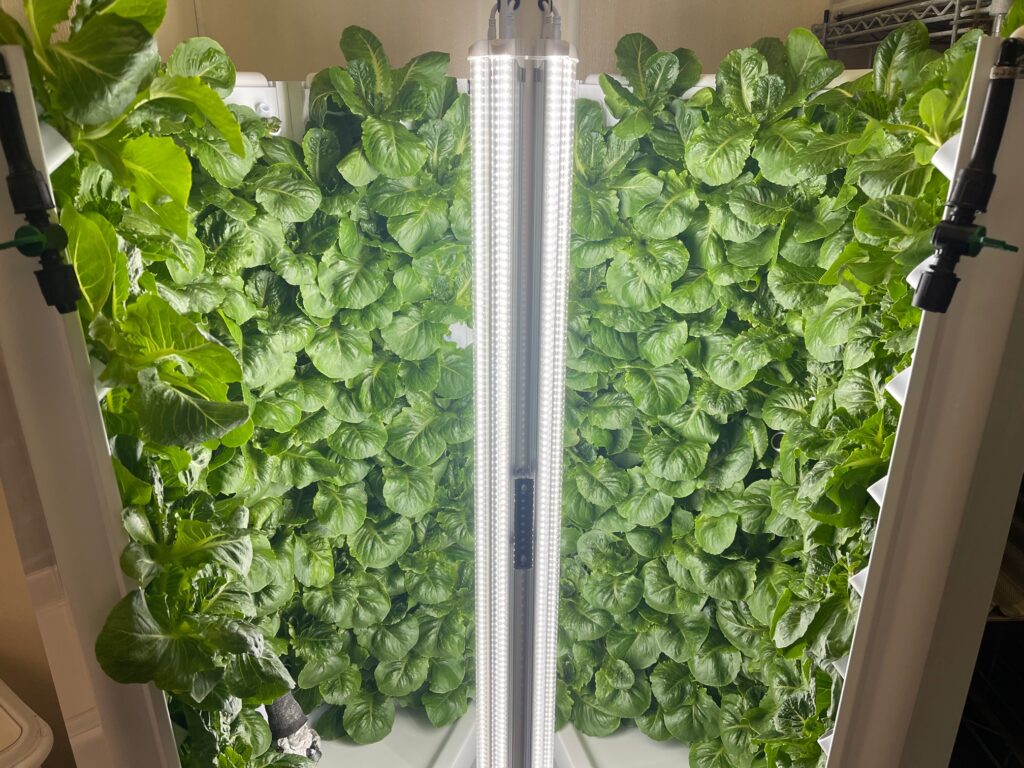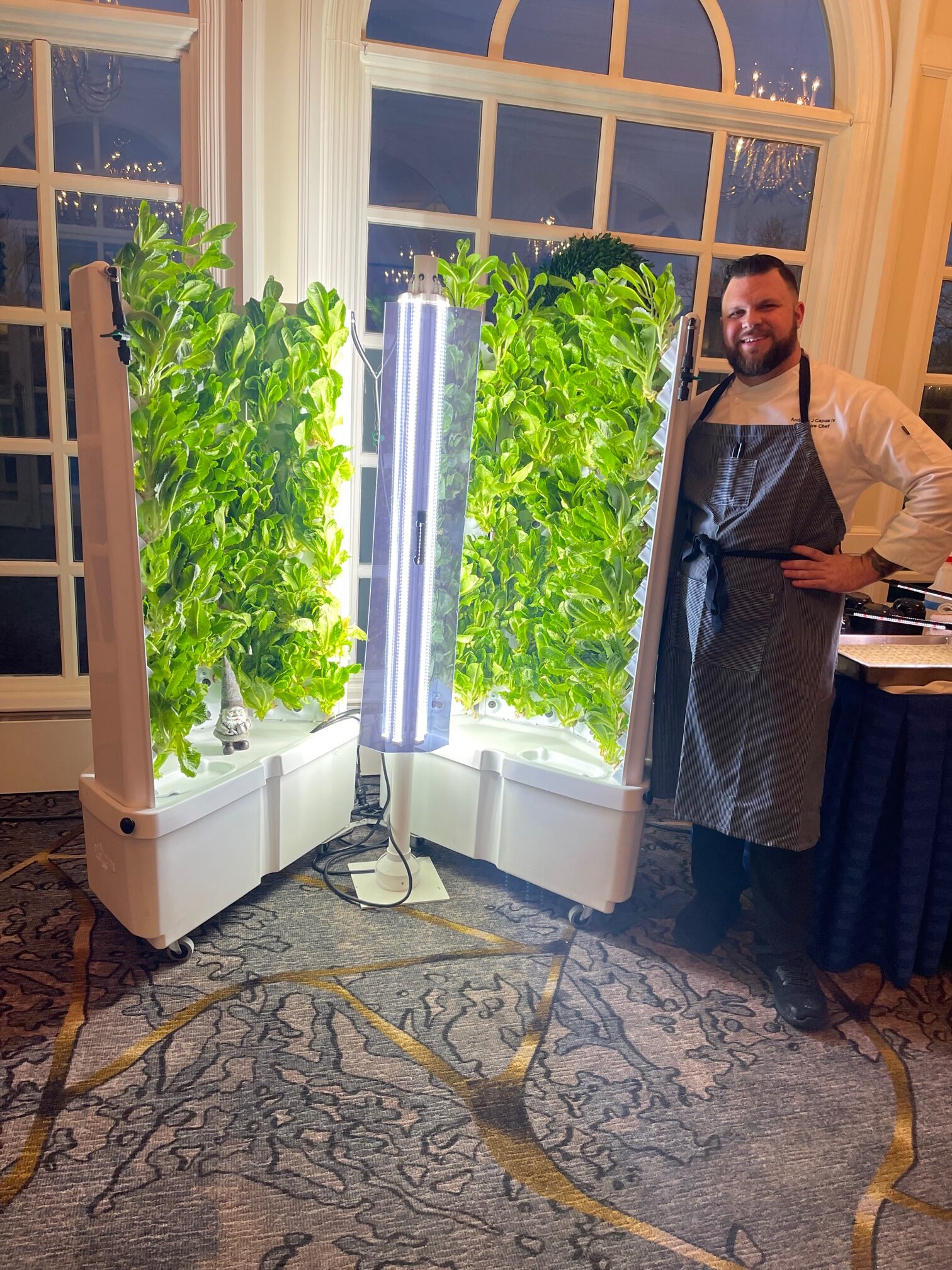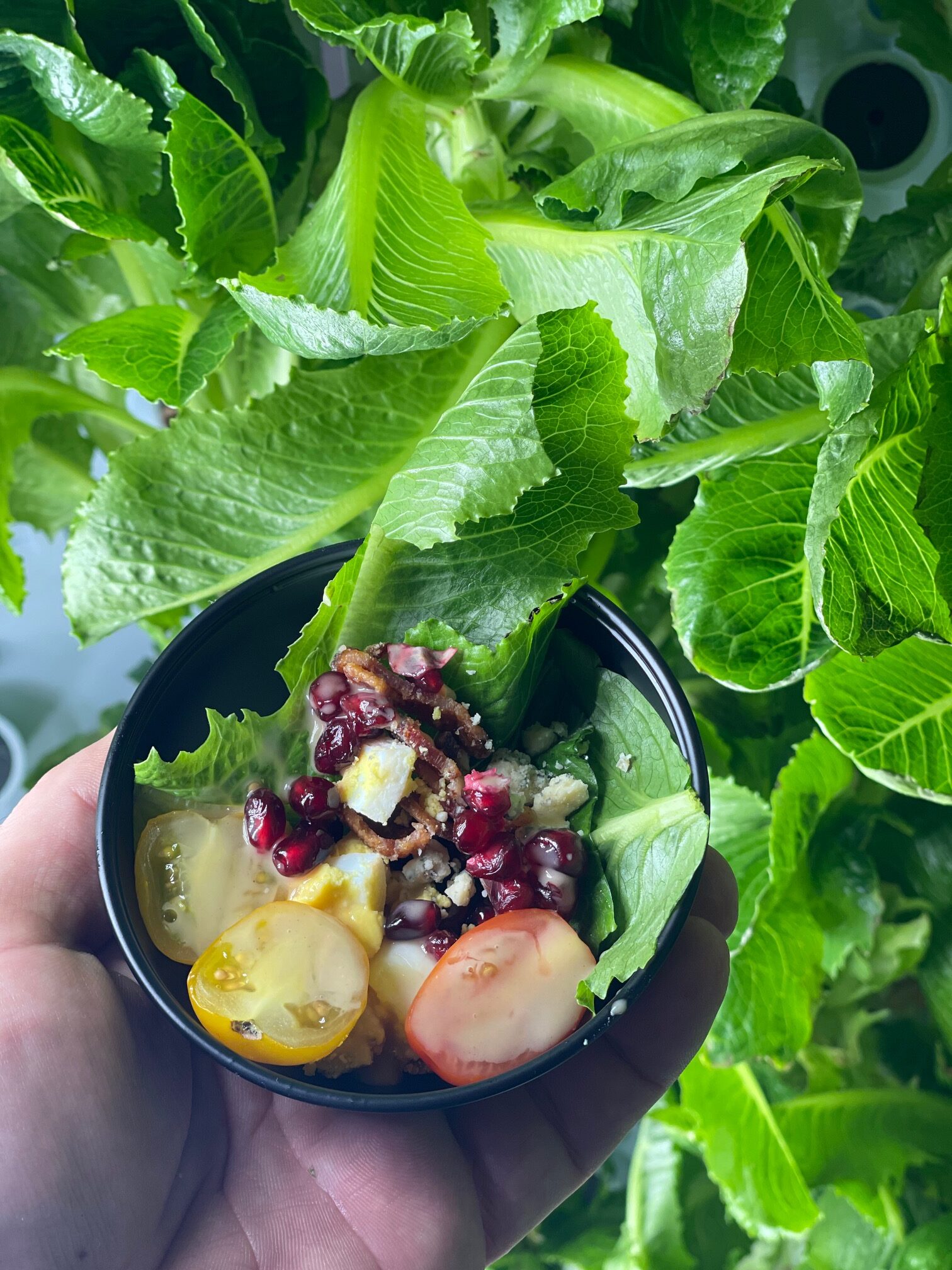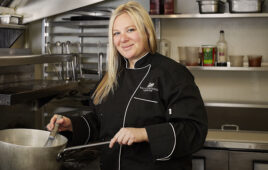 Chefs are always looking into any new idea or item that can take our members’ culinary experience to that next level, whether that’s new plateware or a unique action station. The ability to give our members and guests the “wow” factor is something we pride ourselves on, from both eye appeal to the experience on their palate.
Chefs are always looking into any new idea or item that can take our members’ culinary experience to that next level, whether that’s new plateware or a unique action station. The ability to give our members and guests the “wow” factor is something we pride ourselves on, from both eye appeal to the experience on their palate.
During a fall brainstorming session with our leadership team here at Sycamore Hills Golf Club, we discussed how one of our goals for the summer of 2021 was to integrate a garden here at the club. We were already doing a lot in-house when it came to producing herbs, which I wrote about in a previous blog.
Logically, we thought the next step would be installing a garden here on the property. The issue we ran into last summer was that the ideal spot for the garden on property ended up having a mix of soil that was not ideal for growing fresh lettuces and vegetables. When we realized we had soil issues, it was too late in the growing season to make a pivot. That started to get us thinking – maybe we need to rethink how we grow and garden here at the club.
We had a crazy thought: What if we bring the garden inside the kitchen? It would limit us on the quantity of what we could grow, but it would allow us constant supervision, which we hoped would equate to an outstanding final product. We started to research indoor growing systems, and we kept coming back to one.
When I had my first skype interview with the rep, I realized that not only would this allow us to grow fresh lettuces and vegetables in-house, but this could end up being an awesome showpiece action station for our membership.
After initially speaking with the rep, I did my due diligence by speaking with other chefs who have utilized the same system. I had some great conversations with my mentor, Ryan Daniels, Executive Chef at Fiddlesticks Country Club, about his experience with their system and talking with a few other chefs at some excellent properties about their experience. Everyone I spoke to gave me positive feedback. After hopping on another call with the manufacturer and my General Manager, the system was on its way to the club.
As someone who sometimes struggles to put together my two-year-old daughter’s toys, the assembly couldn’t have been easier. Everything from the assembly, grow instruction, grow guides, and online material, broke down everything in plain English and was very easy to follow. To reiterate, you do not need to be a master gardener to do this. The manufacturer was also very helpful with any questions we had.
Our Executive Sous Chef had the system up and running for our first grow and we planted our first seedlings into the rock wool (seed planters) in about 2 hours. One of the great things about the hydroponic unit is that the absence of dirt keeps the ph and nutrients at ideal levels to sustain growth. As we waited on our first romaine seedlings to grow, we made sure to check our nutrient and PH levels daily to ensure optimal growth. I would estimate that daily maintenance of the unit would never go past just a few minutes once planted. The system pumps up water from the base (catch basin) and slowly drips the water down the inner sides of the unit, where it comes in contact with the rock wool (where the seedlings are planted).

The growing process typically ranges from 18 to 28 days, depending on the plant.
I have to be honest; the first couple of days were nerve-racking. This is because the growth happens in the rock wool while the plants root out. However, once those roots are established, the daily change is impressive. What began as tiny seedlings seemed to bloom into full romaine heads within a matter of a week. There were days when we came in were sure that the plants doubled in size overnight. I can still remember one of those first big growth days, my General Manager walked in, looked in the system and declared, “Ladies and Gentlemen, we are officially farmers!”
We decided to unveil the system to our membership at our annual Christmas Cheer celebration. This event, each year, is a thank you to our membership for their loyalty and patronage throughout the year. We bring in live entertainment, inundate the crowd with heavy passed appetizers, and sprinkle in a few action stations throughout. With the system on wheels, we decided there would be no better way to show off our new toy than by rolling it right out into the dining rooms. One issue that we ran into and quickly solved was the brightness of the grow light. When the system is put together for growing, the plants encircle a light that is raised up through the center of the system. You can open the system up by expanding the circular sides (think wings of a bat). The problem that was created was the grow light was so bright, and with it not being blocked by the system, it was blinding to anyone looking at it.
We are fortunate to have great interdepartmental chemistry here at Sycamore Hills. Our Grounds Department quickly came up with a solution to our problem. They fabricated a tinted plastic shield that connects to the light ballast by magnets, which acted like natural sunglasses to anyone looking at the system.
Now was the fun part. What kind of action station were we going to do? We decided to do a spin on a Winter Cobb Salad. Some freshly clipped (in front of the member) romaine, topped with hen’s egg, Nueske bacon, pomegranate seeds, Point-Reyes bleu cheese, heirloom tomatoes, dressed with a cider emulsion. To say the members gravitated toward the station is a huge understatement. You would have thought we were doing magic with the crowd surrounding us that evening.

In addition to our action station, we also brought out the next round of seedlings already growing in the rock wool, and the lights we use for our seedlings to educate our membership about the entire growing process that we undertook. The questions that we were peppered with that night from the membership brought a smile to my face. This was because I knew that the membership was buying into and loving what we were doing—pushing the culinary envelope as far as we could.
The next day after Christmas Cheer, our leadership team got together and excitedly planned out what events we would showcase an action station using the system next season. Next year it will be all about the guest days, like our annual “The Invitational,” Ladies Member-Guest, and our National Pro-Scratch. We want our members to say to their guests, “that’s right, we grow our lettuce here at Sycamore Hills.”
You can’t beat that feeling of being proud of your members’ pride in their club.
After posting event photos on social media, a few managers reached out to us about the system we chose. Some of their questions involved utilizing the system to lower food costs. Although this system can produce a lot of lettuce (or vegetables), with some lettuces being able to make over 20 pounds every 28 days, one system alone would not be able to keep up with the daily demand for our dining rooms here at SHGC. We can easily see that utilizing multiple systems could supplement our a la carte program, lowering food costs. However, our goal for next year is to become amateur experts with the system, to help provide that “wow” factor for our members and their guests at significant club events.
The real lesson for me is that we can’t be scared of trying new things. Was the thought of asking the GM for the funding to buy an indoor grow system to utilize in our kitchen scary? A little bit. I had plenty of fears like, what if it doesn’t work the way I think it will work?
Thoughts like these stifle both growth and innovation. We must challenge ourselves and our teams. Maybe something like this isn’t exactly right for your club and kitchen. That is OK. But I guarantee there is something in the back of your mind that you have wanted to try, but you just haven’t pulled the trigger on yet.
I am here to attest that, yes, it can be scary sometimes. However, most of the time, it will lead to a rewarding experience for you and your team, plus all those smiles on your members’ faces.




